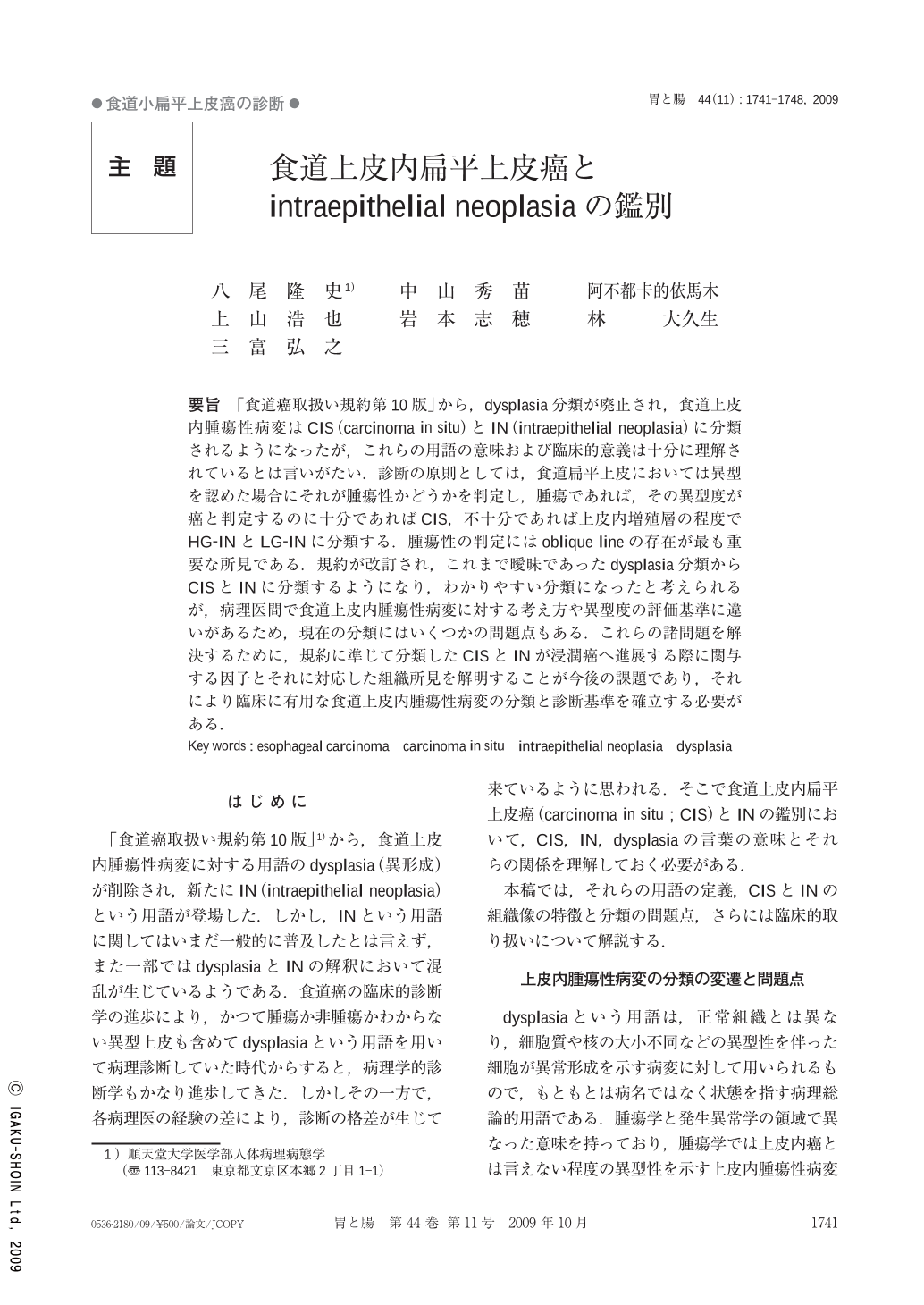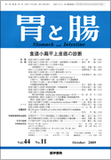Japanese
English
- 有料閲覧
- Abstract 文献概要
- 1ページ目 Look Inside
- 参考文献 Reference
- サイト内被引用 Cited by
要旨 「食道癌取扱い規約第10版」から,dysplasia分類が廃止され,食道上皮内腫瘍性病変はCIS(carcinoma in situ)とIN(intraepithelial neoplasia)に分類されるようになったが,これらの用語の意味および臨床的意義は十分に理解されているとは言いがたい.診断の原則としては,食道扁平上皮においては異型を認めた場合にそれが腫瘍性かどうかを判定し,腫瘍であれば,その異型度が癌と判定するのに十分であればCIS,不十分であれば上皮内増殖層の程度でHG-INとLG-INに分類する.腫瘍性の判定にはoblique lineの存在が最も重要な所見である.規約が改訂され,これまで曖昧であったdysplasia分類からCISとINに分類するようになり,わかりやすい分類になったと考えられるが,病理医間で食道上皮内腫瘍性病変に対する考え方や異型度の評価基準に違いがあるため,現在の分類にはいくつかの問題点もある.これらの諸問題を解決するために,規約に準じて分類したCISとINが浸潤癌へ進展する際に関与する因子とそれに対応した組織所見を解明することが今後の課題であり,それにより臨床に有用な食道上皮内腫瘍性病変の分類と診断基準を確立する必要がある.
The classification of dysplasia was deleted in the Japanese classification of esophageal cancer(The 10th edition). Instead, intraepithelial neoplasia(IN)has been newly introduced. The intraepithelial tumor is classified into carcinoma in situ(CIS)and IN according to the new classification, but, this idea has not become popular yet. When the atypical epithelium is recognized as neoplasia, the lesion can be categolized into CIS or IN by the degree of atypia. The presence of an oblique line is the most important feature in diagnosis of neoplasia.
The lesion can be clearly categorized into CIS and IN according to the new classification compared with the previous one using the vague term “dysplasia”. On the other hand, the new classification involves some problems because of different diagnostic criteria between pathologists. In order to solve them, the factors for progression of intraepithelial tumor should be analyzed in association with the histological features.

Copyright © 2009, Igaku-Shoin Ltd. All rights reserved.


